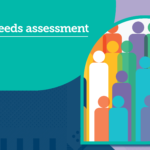Health needs assessments
How can we distribute funding so that it has the greatest impact for people who need the most support?
Primary health networks (PHNs) and other organisations that commission health care solutions, such as hospitals and governments, face local and global challenges which impact their work. These include workforce shortages, population changes and cost of living pressures.
These challenges are also incentives for adaptation and transformation. Commissioning organisations must work efficiently and collaboratively to allocate every dollar to achieving the quintuple aim of health care reform:
- health equity
- people’s experience of care
- health outcomes
- health care provider experience
- health system cost efficiency and sustainability.
So, how can commissioners and funding bodies fairly assess need across vast, diverse, and ever-changing geographic areas?
An evidence-based approach to defining need
To ensure equitable access to health care across its catchment, North Western Melbourne Primary Health Network (NWMPHN) has created the Health Needs Assessment Framework.

The framework includes an evidence-based approach to quantify need using the social determinants of health (non-medical factors that influence health outcomes). It recognises that the issues the health system needs to address, especially in disadvantaged areas, are multi-faceted and require a holistic, collaborative system approach.
NWMPHN’s evidence-based approach considers 4 types of need:
- Comparative
- Felt
- Expressed
- Normative
Each type is better understood through 3 types of evidence:
- Analysis of quantitative population health data
- Community consultation
- Health provider engagement and subject matter expertise
One of the key differentiators of our approach is how we make sense of the vast volumes of data analysed.
We quantify need by grouping the population health data into 5 metrics, each with distinct indicators researched and assessed against a set of key criteria. The metrics are:
- population
- socio-demographic factors
- risk factors
- access to health services and geographic environment
- health conditions and consequences.

Benefits of this approach
Our framework makes a complex conceptual approach to understanding need practicable, actionable and more efficient.
It ensures more time is spent drawing insights from data than working out how to analyse it.
It gives stakeholders confidence that funding decisions are well researched, evidence-based and equitable.
Most importantly, perhaps, our approach is adaptable to regions outside of NWMPHN and we are pleased to discuss collaboration opportunities with partner organisations.
To enquire about using our approach and associated tools, please contact Emma McKeown, Executive Director – Insight, Performance and Digital Services by email to emma.mckeown@nwmphn.org.au
View our framework in action
View our interactive presentation to see how we’re using the framework to re-examine need in the West Metro Health Service Partnership region.







